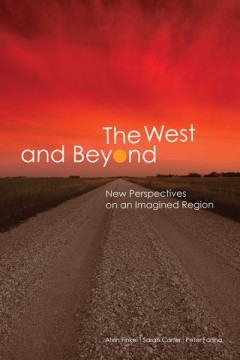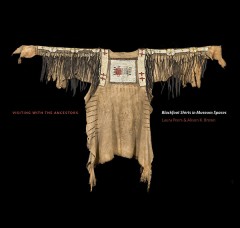Filter by

Computational Intelligence Applications in Modeling and Control
The development of computational intelligence (CI) systems was inspired by observable and imitable aspects of intelligent activity of human being and nature. The essence of the systems based on computational intelligence is to process and interpret data of various nature so that that CI is strictly connected with the increase of available data as well as capabilities of their processing, mutual…
- Edition
- -
- ISBN/ISSN
- 978-3-319-11017-2
- Collation
- -
- Series Title
- -
- Call Number
- -

Computational Intelligence International Joint Conference, IJCCI 2014 Rome, …
The present book includes a set of selected extended papers from the sixth International Joint Conference on Computational Intelligence (IJCCI 2014), held in Rome, Italy, from 22 to 24 October 2014. The conference was composed by three co-located conferences: The International Conference on Evolutionary Computation Theory and Applications (ECTA), the International Conference on Fuzzy Computati…
- Edition
- -
- ISBN/ISSN
- 978-3-319-26393-9
- Collation
- -
- Series Title
- -
- Call Number
- -

Computational Intelligence Revised and Selected Papers of the International …
The present book includes a set of selected extended papers from the fifth International Joint Conference on Computational Intelligence (IJCCI 2013), held in Vilamoura, Algarve, Portugal, from 20 to 22 September 2013. The conference was composed by three co-located conferences: The International Conference on Evolutionary Computation Theory and Applications (ECTA), the International Conference …
- Edition
- -
- ISBN/ISSN
- 978-3-319-23392-5
- Collation
- -
- Series Title
- -
- Call Number
- -

Beverage Consumption Habits around the World : Association with Total Water a…
Fluid intake has barely been assessed, and hydration status has only rarely been measured in epidemiological studies. This hampers attempts to assess the adequacy of water intake at a population level. However, although guidelines have been established to determine how much water humans require to avoid dehydration and to optimize physical and psychological function, limited data are available …
- Edition
- -
- ISBN/ISSN
- 978-3-03842-635-6
- Collation
- -
- Series Title
- -
- Call Number
- 610 BEV

Cadmium Sources and Toxicity
Cadmium (Cd) is an environmental toxicant of continuing public health concern worldwide, because total diet studies have shown that Cd is present in virtually all foodstuffs. Consequently, foods that are frequently consumed in large quantities, such as rice, potatoes, wheat, leafy salad vegetables, and other cereal crops, are the most significant dietary Cd sources. Moreover, Cd has chemical pr…
- Edition
- -
- ISBN/ISSN
- 978-3-03897-985-2
- Collation
- -
- Series Title
- -
- Call Number
- 610 CAD

The West and Beyond New Perspectives on an Imagined Region
The West and Beyond explores the state of Western Canadian history, showcasing the research interests of a new generation of scholars while charting new directions for the future and stimulating further interrogation of our past. This dynamic collection encourages dialogue among generations of historians of the West, and among practitioners of diverse approaches to the past. It also reflects a …
- Edition
- Alvin Finkel, Sarah Carter, and Peter Fortna
- ISBN/ISSN
- 9781897425800.01
- Collation
- -
- Series Title
- The West Unbound: Social and Cultural Studies
- Call Number
- 461 pages

We Are Coming Home Repatriation and the Restoration of Blackfoot Cultural Co…
In 1990, Gerald Conaty was hired as senior curator of ethnology at the Glenbow Museum, with the particular mandate of improving the museum’s relationship with Aboriginal communities. That same year, the Glenbow had taken its first tentative steps toward repatriation by returning sacred objects to First Nations’ peoples. These efforts drew harsh criticism from members of the provincial gover…
- Edition
- Gerald T. Conaty
- ISBN/ISSN
- 9781771990172.01
- Collation
- -
- Series Title
- -
- Call Number
- -

Visiting With the Ancestors Blackfoot Shirts in Museum Spaces
In 2010, five magnificent Blackfoot shirts, now owned by the University of Oxford’s Pitt Rivers Museum, were brought to Alberta to be exhibited at the Glenbow Museum, in Calgary, and the Galt Museum, in Lethbridge. The shirts had not returned to Blackfoot territory since 1841, when officers of the Hudson’s Bay Company acquired them. The shirts were later transported to England, where they h…
- Edition
- -
- ISBN/ISSN
- 9781771990370.01
- Collation
- -
- Series Title
- -
- Call Number
- 10.5 x 10, 232 pages

Views From Fort Battleford Constructed Visions of an Anglo-Canadian West
The Myth of the Mounties as neutral arbiters between Aboriginal peoples and incoming settlers remains a cornerstone of the western Canadian narrative of a peaceful frontier experience that differs dramatically from its American equivalent. Walter Hildebrandt eviscerates this myth, placing the NWMP and early settlement in an international framework of imperialist plunder and the imposition of co…
- Edition
- -
- ISBN/ISSN
- 9781897425459
- Collation
- -
- Series Title
- -
- Call Number
- -

Unsettling Colonialism in the Canadian Criminal Justice System
Canada’s criminal justice system reinforces dominant relations of power and further entrenches the country in its colonial past. Through the mechanisms of surveillance, segregation, and containment, the criminal justice system ensures that Indigenous peoples remain in a state of economic deprivation, social isolation, and political subjection. By examining the ways in which the Canadian justi…
- Edition
- Vicki Chartrand and Josephine Savarese
- ISBN/ISSN
- 9781771993685
- Collation
- -
- Series Title
- -
- Call Number
- 6 x 9, 340 pages
 Computer Science, Information & General Works
Computer Science, Information & General Works  Philosophy & Psychology
Philosophy & Psychology  Religion
Religion  Social Sciences
Social Sciences  Language
Language  Pure Science
Pure Science  Applied Sciences
Applied Sciences  Art & Recreation
Art & Recreation  Literature
Literature  History & Geography
History & Geography